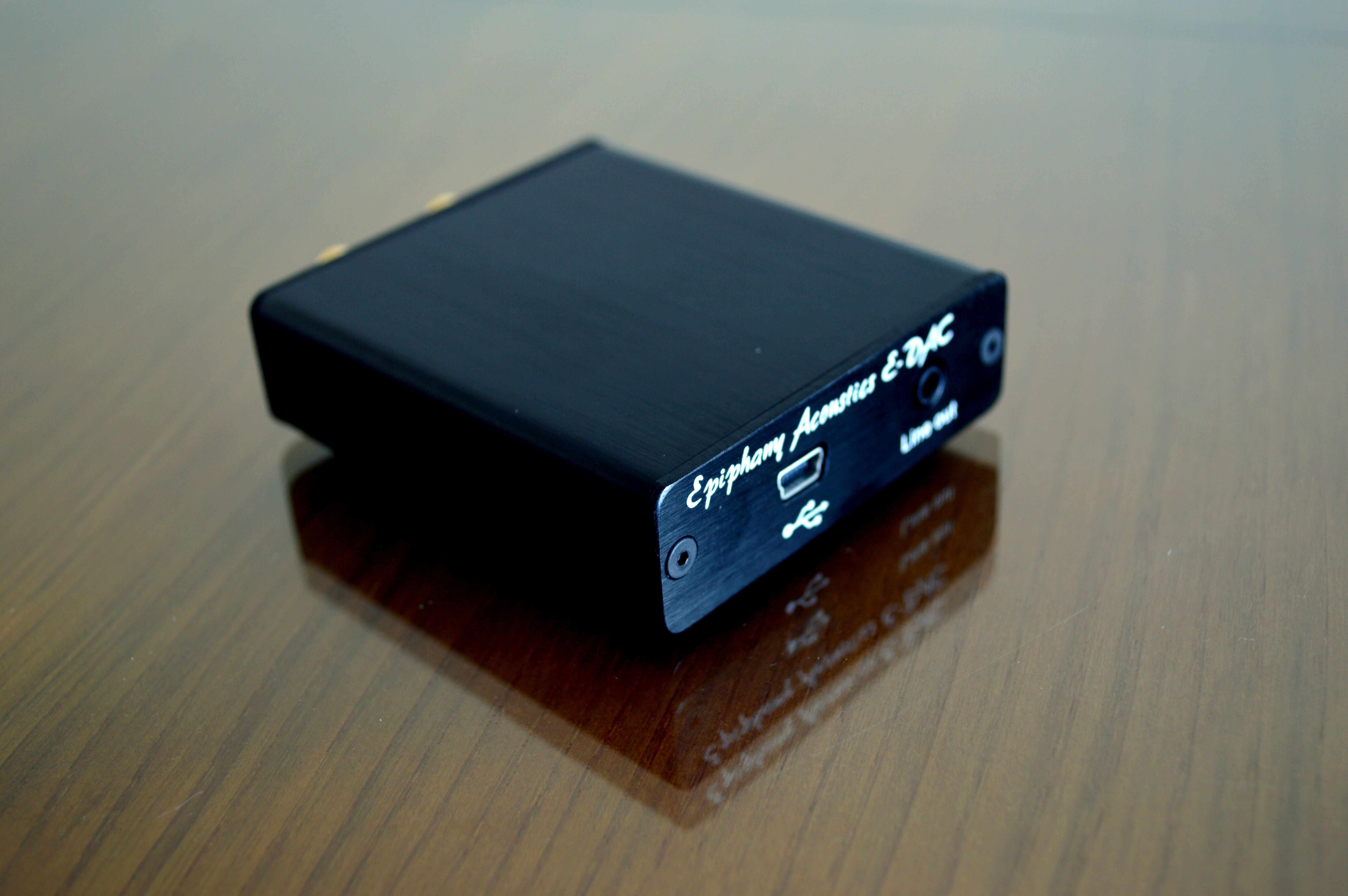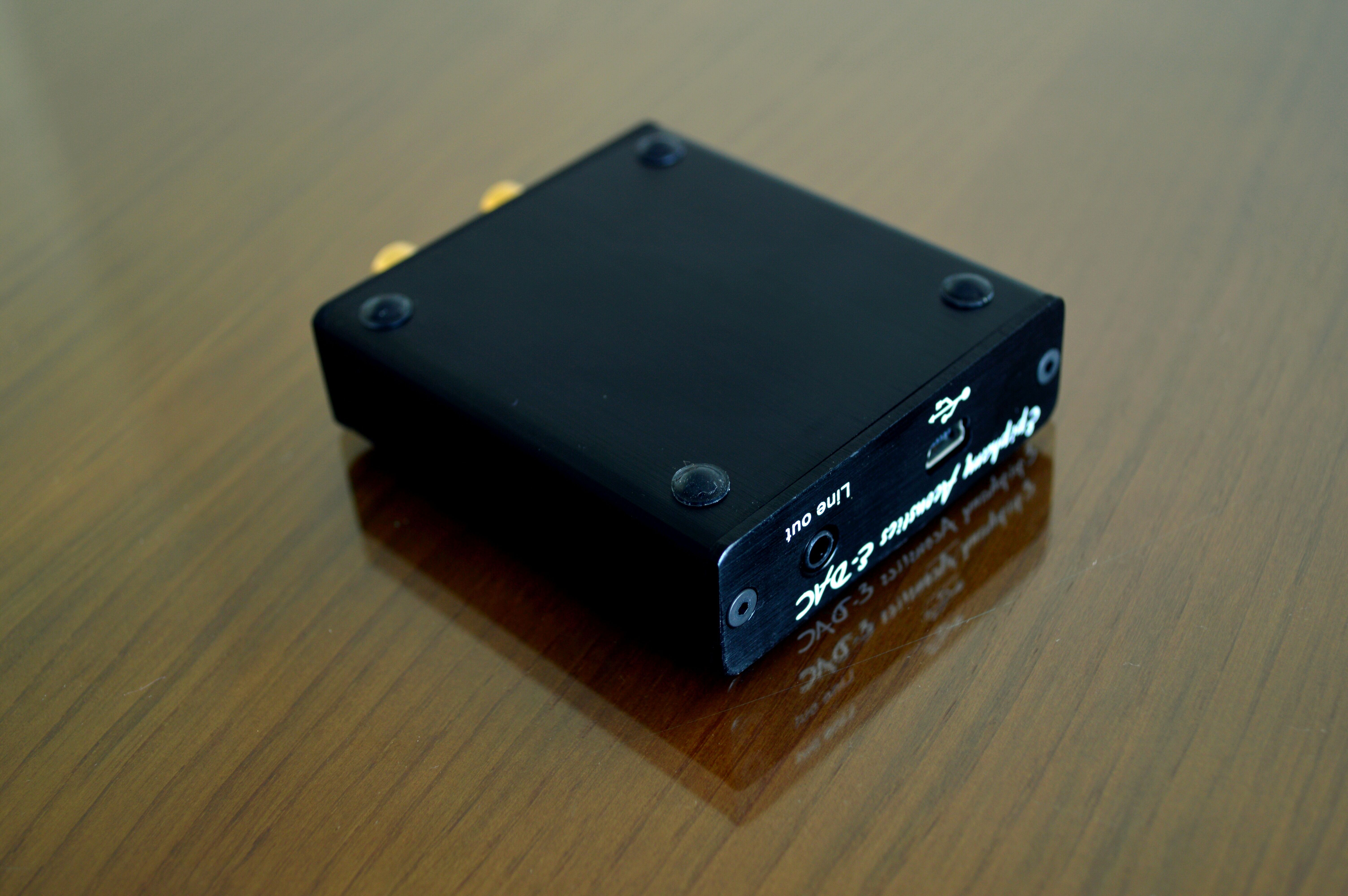Epiphany Acoustics E-DAC Review:
Firstly i would like to thank oliver at Epiphany Acoustics for sending me this sample for review, i will write as honest a review possible. My version had RCA outputs on the back, the E-DAC is the same as the ODAC, just a different name.
This device received over 50hrs burn-in, no changes were noted.
Gear used: Nexus 7 (AOKP Rom, with Franco Kernel) using Neutron media player > usb OTG > E-DAC > Hybrid silver/copper mini-mini cable > JDS Labs O2 > Alclair Reference monitors / Final Audio Design Piano Forte X-G
Features:
ES9023 DAC chip
16 bit and 24 bit
44.1kHz, 48kHz and 96kHz
On-board filtered power supply
On-board crystal controlled oscillator
Works straight from USB
3.5mm and stereo RCA line outputs
Technical specifications:
Distortion: <0.005%
Dynamic range: >110dB A-Weighted
Audio formats: 44.1kHz, 48kHz & 96kHz @ both 16 bit and 24 bit
Interface: USB Audio Class 1
Compatibility: Windows, Mac, Linux
Line output: 2Vrms
MSRP: £99
Packaging, Accessories and Build quality:
I am not sure if i got retail packaging with this sample, it came in a well packaged cardboard box only, but at least it was well protected.
Accessories it did not come with, only an instruction sheet, USB cable and 4 rubber feet. I think just a standard mini-mini cable should be included, and a small carry pouch also.
Ease of use and Connectivity:
This device is super easy to use, and the layout of the device is very simple too. All you have on the front is a Mini USB port, and a 3.5mm output, on the back you have the RCA outputs, nothing else. This device is plug and play with computers, they will install the drivers instantly and it will work. I would have liked to see a LED that tells you it’s working though.
Connectivity with Android using a custom kernel is easy too, you just boot the device with the E-DAC connected and it should work fine.
Sound:
I wont split this in to the usual 3 categories, I will write about the sound as a whole.
Well hooked up to my Nexus 7 the sound is clean and detailed. The problem with the Nexus 7 is that it has very high output impedance from the headphone out, so when driving headphones directly it really messes with the frequency response on low impedance headphones like the ones I mostly use, using this DAC solves this problem.
I usually listen to my music from my iPod hooked up to the O2 amp, but using this DAC you get more detailed and flatter sound, which to some may sound fatiguing if they are used to a warmer sound. This DAC was designed to be Objectively Transparent and Neutral, and paired with the O2 which has the same design principles you do get a very neutral and transparent sound, junk goes in, junk come out, feed it good quality music and all the nuances and detail is easily picked out and you can hear the real music.
I can understand why some people find the E-DAC fatiguing as they are most likely used to warmer gear, but this DAC doesn’t get in the way of how the recording was supposed to sound. Each person has his own preference, I personally look for a neutral and detailed sound with a smooth presentation. This DAC with the O2 give me that. So this DAC has succeeded to do what it was built to do, give transparent sound at a low cost.
Soundstage, imaging a instrument separation depend on the recording, as this DAC does not add any flavour to the sound.
Conclusion: As you can tell, and also from all the other reviews out there of this DAC, it is neutral and transparent and lets you listen to the music and not the gear. This DAC doesn’t add or take away anything from the sound, it portrays whats recorded. If you want reference sound at a low price, this DAC is great value, but i understand it is not for everyone.
A great transparent DAC that will not break the bank.
Tracks used:
I used a few albums like Couer de Pirate – Blonde (mp3 320kbps), Lights – Itunes session (mp3 320kbps), Rodrigo y Gabriela – Rodrigo y Gabriela (FLAC) and a few more other tracks.
Photos taken with Nikon D3200





